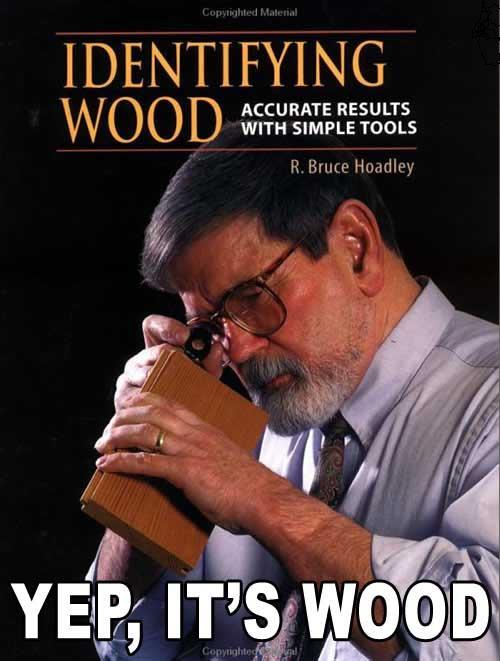Rest
All these years later I still chuckle at what a fucking moron that guy is.
Headstamp Publishing will let you learn all there is to know about Japanese swords with
Swords of the Emperor: A Guide to the Identification of Imperial Japanese Swords, 1873–1945

Swords of the Emperor: A Guide to the Identification of Imperial Japanese Swords, 1873–1945 is a comprehensive reference work examining a little-studied period in the Japanese swordmaking tradition.

Update: interview by the publisher
Discounted preorder for "Swords of the Emperor" still available: https://www.headstamppublishing.com/s... Nic Jenzen-Jones and Stephen Weese talk today about some of the background of Headstamp Publications' newest book, "SWORDS OF THE EMPEROR: A Guide to the Identification of Imperial Japanese Swords, 1873 – 1945". Nic and Stephen were both contributors and editors to the work.
Update 2: The publisher uses the book to identify his own sword
"Swords of the Emperor" still available for discounted preorder - get your copy today!
https://www.headstamppublishing.com/s...
When Japan opened up to the outside world and began to industrialize in the late 1800s, it instituted major military reforms. In place of the samurai tradition, the new Japanese Imperial armed forces emulated the major European powers - France, Germany, and the United Kingdom. One element of this was the replacement of traditional swords with European styles for officers and civil officials.
These swords remained until the mid 1930s, when a wave of nationalist sentiment ran through Japanese society. In 1934, a new model of officer's sword was adopted, which took the style of a traditional katana. A similar (but less fancy) model was adopted in 1935 for non-commissioned officers. These were the Type 34 and Type 35 respectively, and they are some of the most common Japanese swords in the United States, as many were brought back as souvenirs by American soldiers.
Today we are looking at my Type 95, using Headstamp's upcoming book "Swords of the Emperor" as a guide.
Contact:
Forgotten Weapons
6281 N. Oracle 36270
Tucson, AZ 85740
Interview with the author:
Edit 3: The printing process has begun!
Update 3: the book is out!
In stock and shipping!
Swords of the Emperor: A Guide to the Identification of Imperial Japanese Swords, 1873–1945

Swords of the Emperor: A Guide to the Identification of Imperial Japanese Swords, 1873–1945 is a comprehensive reference work examining a little-studied period in the Japanese swordmaking tradition.
Japan is internationally renowned for its traditional swords, but comparatively little has been written about the swords of the Imperial period, which include both traditional, hand-made examples and modern, machine-made types. After Japan was 'opened' to the West in the 19th century, a period of rapid modernization saw the adoption of European-style military arms, uniforms, and accoutrements. This was also reflected in changes to military swords, which closely echoed Western designs—albeit with a Japanese twist—until a period of resurgent nationalism in the 1930s that continued through the Second World War. Swords of the Emperor follows the evolution of Japanese military, police, diplomatic, and court swords throughout this fascinating, complex period.
At nearly 600 pages, Swords of the Emperor illustrates more than 220 swords by way of more than 2,000 original photographs, supplemented by archival material and original illustrations. In addition to those swords prescribed by uniform regulations for the armed services and civil service corps, the book also examines little-known examples, such as the 1873 Japanese Marine sword and the Gensuitō (Marshal's sword) gifted to King George V in 1918. While the book is primarily intended as an identification and reference guide for collectors, curators, and researchers, enthusiasts will find much to enjoy in this beautiful, lavishly illustrated volume.
John E. Plimpton is a prominent Japanese sword collector and retired antiques dealer. His Japanese sword collection is believed to have been the second-largest of its kind in the United States—until recently, John owned one of nearly every known type of Japanese sword officially issued from 1873 to 1945. A graduate of the University of Southern California, he served in the U.S. Navy for three years during the Vietnam War. Subsequently, John worked at the Petersen Automotive Museum and at the Martin B. Retting, Brass Rail, and Collector's Armoury gun stores. John has been a member of the Nihon Bijutsu Tōken Hozon Kyōkai (NBTHK), Nanka Tōken Kai – Southern California Japanese Sword Society, the To-Ken Society of Great Britain, and The Japanese Sword Society of the United States (JSSUS). One of John's hobbies is flying in Second World War fighter and bomber aircraft.

Update: interview by the publisher
Discounted preorder for "Swords of the Emperor" still available: https://www.headstamppublishing.com/s... Nic Jenzen-Jones and Stephen Weese talk today about some of the background of Headstamp Publications' newest book, "SWORDS OF THE EMPEROR: A Guide to the Identification of Imperial Japanese Swords, 1873 – 1945". Nic and Stephen were both contributors and editors to the work.
Update 2: The publisher uses the book to identify his own sword
Reject Modernity; Embrace Tradition: The Type 95 Shin Gunto
"Swords of the Emperor" still available for discounted preorder - get your copy today!
https://www.headstamppublishing.com/s...
When Japan opened up to the outside world and began to industrialize in the late 1800s, it instituted major military reforms. In place of the samurai tradition, the new Japanese Imperial armed forces emulated the major European powers - France, Germany, and the United Kingdom. One element of this was the replacement of traditional swords with European styles for officers and civil officials.
These swords remained until the mid 1930s, when a wave of nationalist sentiment ran through Japanese society. In 1934, a new model of officer's sword was adopted, which took the style of a traditional katana. A similar (but less fancy) model was adopted in 1935 for non-commissioned officers. These were the Type 34 and Type 35 respectively, and they are some of the most common Japanese swords in the United States, as many were brought back as souvenirs by American soldiers.
Today we are looking at my Type 95, using Headstamp's upcoming book "Swords of the Emperor" as a guide.
Contact:
Forgotten Weapons
6281 N. Oracle 36270
Tucson, AZ 85740
Interview with the author:
Edit 3: The printing process has begun!
| |||||||||||||||
|
Update 3: the book is out!
| |||||||||||||||
| |||||||||||||||
|
In stock and shipping!
| ||||||||||||||
Last edited:


















